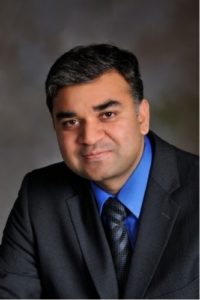MCARE Plenary Speakers
Plenary Sessions
Monday, August 21

Prabhakar Singh, UTC endowed Chair Professor Ph.D., University of Connecticut. England Department of Materials Science & Engineering Center for Clean Energy Engineering.
Title: Materials for Electrochemical Energy Systems: From Distributed Power Generation to Large Scale Hydrogen production.
Electrochemical energy systems (fuel cells, electrolyzers, chemical reactors) offer an efficient and clean pathway to produce electrical power and hydrogen from a variety of conventional and renewable resources. Large kWe and MWe class systems have been manufactured and are in operation globally. Status of various fuel cells and electrolyzer technologies will be reviewed with focus on device materials, fabrication processes and electrodics. Key challenges associated with long term performance stability and materials degradation will be discussed. Role of complex gas and redox atmospheres, trace fuel and airborne contaminants, surface and interface morphological changes and reaction products formation on the stability of perovskite electrode, active infiltrants, accelerated corrosion of metallic current collectors will be analyzed, and degradation processes will be discussed. Approaches for the mitigation of materials degradation will be outlined. Research needs for the rapid adoption of specialty (space, automotive and stationary) and large-scale systems will be proposed.
Wednesday, August 23

Shashank Priya, Prof. Shashank Priya is currently a Professor in the Department of Materials Science and Engineering at The University of Minnesota. He is a past chair of the Electronics Division of The American Ceramic Society and a member of The American Ceramic Society’s Energy Task Force. Dr. Priya was an Associate Editor for The Journal of the American Ceramic Society from 2010 – 2012.
Title: Energy Harvesting Materials and Systems
Energy harvesting methods have provided an opportunity to develop self-powered architectures, where power for electronic devices can be generated from the energy sources present in the environment. In this presentation, examples illustrating these self-powered architectures will be provided covering solar, thermal, magnetic field, and vibration energy harvesting in applications ranging from Internet of Things (IoT) devices to portable power generator to distributed power sources. The presentation will emphasize advances made in synthesis of textured piezoelectrics, organo-halide perovskites, thermoelectrics and magnetoelectric composites. Novel synthesis techniques such as spark plasma sintering, dry/wet aerosol deposition, laser annealing, and template grain growth will be discussed. These thick film / bulk ceramic synthesis methods have provided the opportunity to develop materials with specific figure of merit. Interface design through controlled laser annealing has opened the opportunity to achieve high coupling factors responsible for impedance matching. In-depth discussion of the design, modeling and testing procedures for energy harvesters will be provided to promote consistency in reporting. Lastly, the presentation will provide examples of prototype devices that have demonstrated success in powering intended applications.



